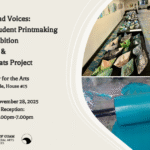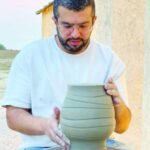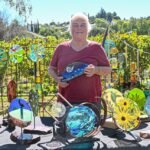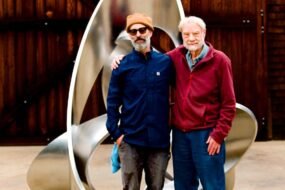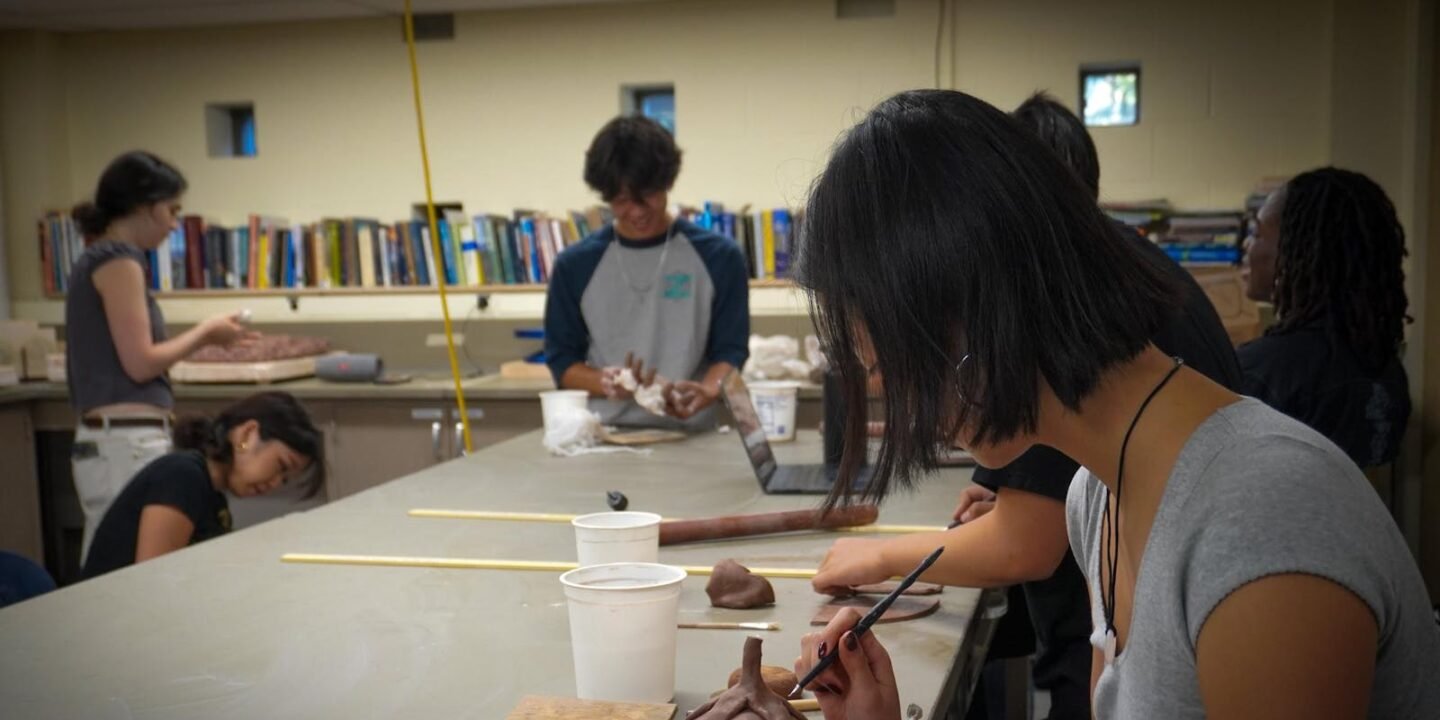
When Pottery@Brown President Rachel Harrison ’27, a former copy editor for The Herald, first arrived on campus, she struggled to find a space where she could hone her ceramics skills.
“I didn’t have a place to do pottery consistently on campus,” she said. “Getting into a ceramics studio on your own is difficult and pretty costly.”
Establishing a formal pottery club and studio on College Hill has been in conversation for decades, Harrison told The Herald. With difficulty accessing the Rhode Island School of Design’s studios, students have faced disappointment when seeking a space to work with clay.
“It can be a big ask to take up space on campus,” Harrison said.
But in fall 2024, former President Jasper Lincoln ’25, current Vice President Zay Hampden ’27, Harrison and other ceramics lovers officially launched Pottery@Brown and made their first appearance at the club fair.
Since then, the organization has surged in membership, amassing approximately 1,800 names on its mailing list, according to Harrison. At this year’s club fair alone, they received nearly 400 new sign-ups.
“The interest has been truly staggering,” Harrison said. “It’s part of what has helped us get momentum.”
Demand is so high that the club recently shifted from a lottery system to a first-come, first-serve model with Eventbrite. Out of the hundreds of students hoping to engage with the club, only about 65 can secure a spot in each five-week cycle, with two cycles offered per semester. The club accommodates additional members through special events, such as a recent session for students living off campus, giving more students the chance to participate.

Brown’s pottery club now operates in a small shared studio space in the Brown Design Workshop in Barus & Holley.
The system change helps prioritize students who are the most invested, Harrison explained.
“We wanted to put more power in the hands of the people,” Hampden added.
Talia Yett ’26 recalled entering the lottery system last year but wasn’t accepted to any of the sessions. This fall, they set a calendar reminder for the Eventbrite release, and the strategy worked.
“It’s like you’re buying tickets for a show,” they said.
The club, which used to bring members to Mudstone Studios in Pawtucket, Rhode Island, now operates in a small shared studio space in the Brown Design Workshop. With three wheels in their possession, they hope to expand the space and acquire an on-campus kiln. Currently, the club has drivers who routinely bring their dried pieces to be fired by a local artist in East Providence.
“If we have (a kiln) here, we can have a quicker turnaround,” said Juben Rabbani GS, a board advisor and studio aide for the club. This would allow more members to fire their work, he explained, which helps the club “serve more of those who are interested.”
But before firing, the slow, multi-step process begins with shaping raw clay on the wheel and letting it dry, Rabbani explained. From there, pieces are trimmed, left to dry fully and prepared for their first round in the kiln, which transforms clay into ceramic.
“Pottery has two firings,” Rabbani said. For the second round, color is applied to the piece before firing it again. “That’s where you have your final piece,” he said.
For many students, pottery provides a meditative break from academic pressures. “Coming into the studio, the only thing that matters is making sure that clay doesn’t fly off the wheel,” said Fabiola Penafiel ’28. As a studio tech, Penafiel provides ceramics guidance at sessions, offering her time to teach others.
Get The Herald delivered to your inbox daily.
Penafiel began working with clay as a sophomore in high school.
“I came in thinking Brown didn’t have a pottery space and maybe not many people who cared about it,” she said. “But I quickly realized there are so many of us.”
Yett said that “it’s fun to be able to create something artistic,” since they don’t normally carve out time for creative endeavors.

To expand access, the club has hosted events such as a recent outdoor sculpture workshop led by a visiting artist.
“Just being like, ‘Oh my God, I made that’ — that’s really cool,” they said. As a busy senior, having an interest that is lower-commitment allows Yett to achieve balance.
Hampden described working with clay as a relationship, a back-and-forth that requires communication: “You have to listen to the clay.”
He added that his favorite part of leading the club is meeting new people and watching pottery bring community members from “all walks of life together.”
The club’s leaders emphasized the collective effort behind their steady growth. Alongside Harrison, Hampden and Rabbani, a diverse group of students and community members have helped the organization reach new faces. To expand access, the club has hosted events such as a recent outdoor sculpture workshop led by a visiting artist.
But space remains the club’s most pressing concern.
“Right now, we do share the classroom with a variety of engineering clubs and classes,” Penafiel said. “So it makes it harder for people to come in whenever they want.”
“We are turning down way more people than we would like,” Harrison said.
For Hampden, a big challenge is showing University administrators and faculty that students can “figure out a proper system in which pottery could be cleanly and safely done in a sustainable and accessible way.” In the future, leaders and members hope for a dedicated studio that is open 24/7 for anyone to come into.
“Our goal for the pottery club is that anybody could do it, regardless of cost,” Hampden said.

